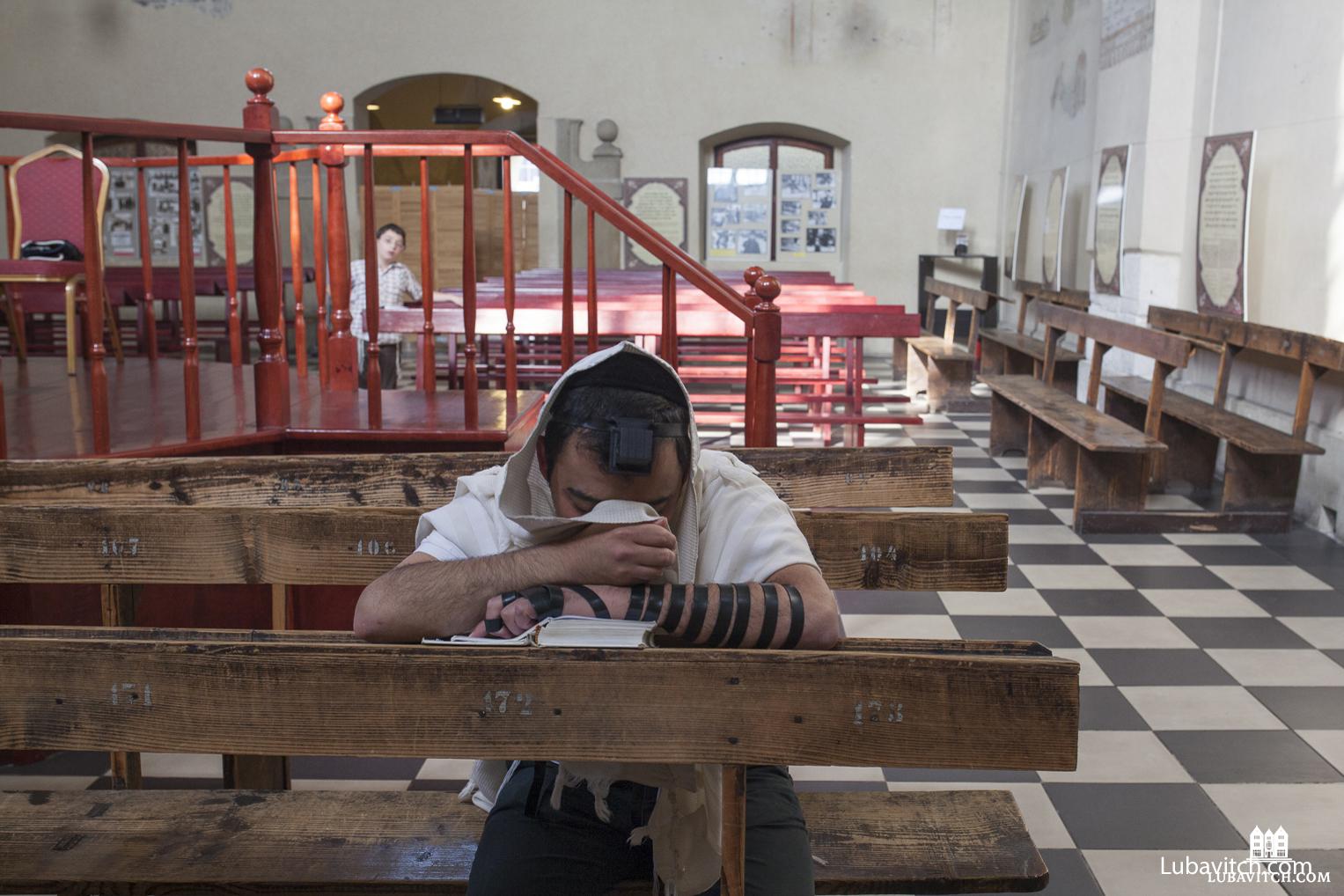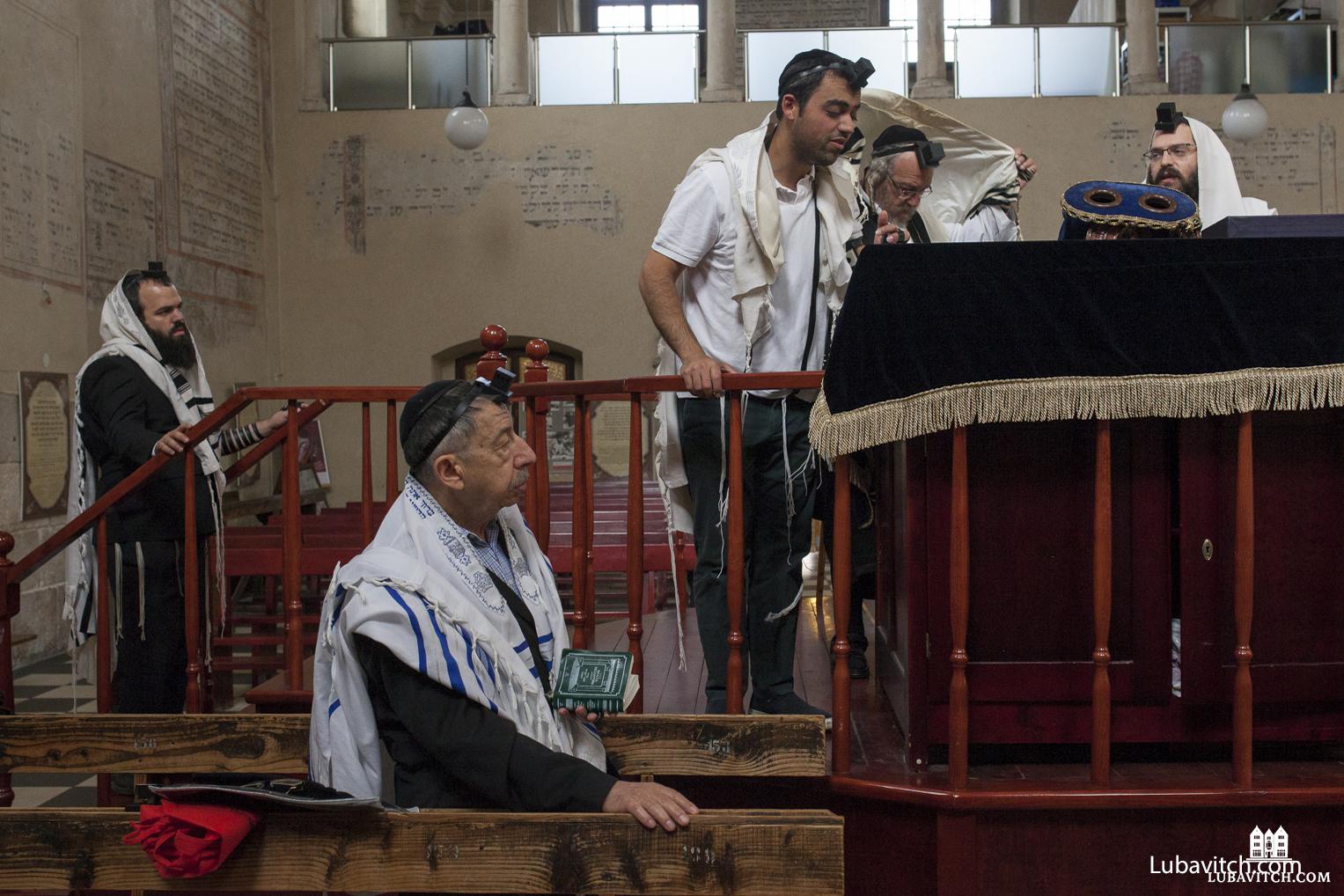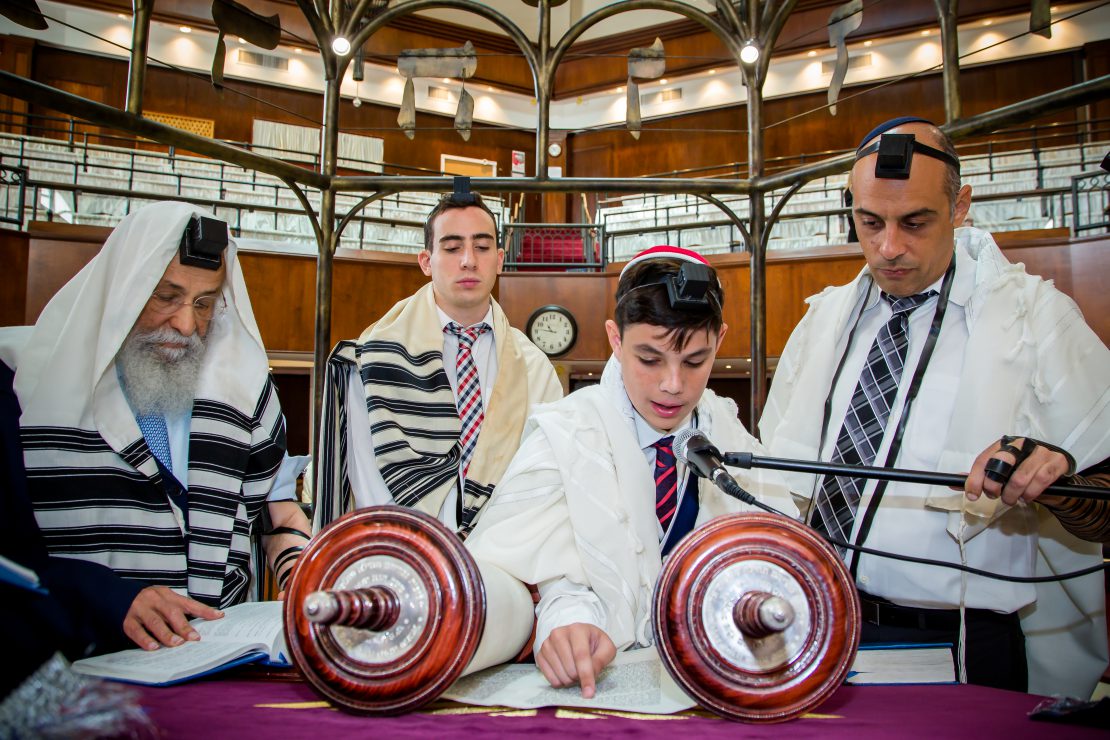On Rosh Hashanah afternoon, a large crowd will gather on a beach twenty nautical miles north of Boston for the annual tashlich ritual. Earlier that day, 600 people will participate in the various High Holiday services offered at Chabad of the North Shore across the street. These services include a large traditional minyan in the main sanctuary, a learner’s service held in a large tent outdoors, a teen session, and a preschool-friendly Jewish New Year experience.
But this isn’t the norm. Like most synagogues across North America, the Chabad Community Shul of the North Shore fills up during the High Holiday season. Just weeks after the impressive crowds disperse, the rabbi will scramble to find a tenth man for the synagogue’s regular services, as will many of his peers.
Over the past two decades, synagogue membership has declined across the United States, with less than one-third of American Jews choosing to affiliate with a congregation. According to the 2013 Pew Research Center Study, only twenty-three percent of U.S. Jews attend synagogue on a regular basis. And many rabbis suspect that self-reporting inflates that number.
“America was once home to a flourishing synagogue culture,” says Rabbi Yossi Lipsker, Chabad director of the North Shore. He is referring to the 1950s and 1960s, which saw a boom in synagogue establishment. “For decades, that was where communal Jewish life was manifest. But that era of shul-going has been taken for granted for too long. Today’s Jews are looking for different ways to engage with their Jewish identity. It is a completely different mindset.”
 A congregant prays in a 400-year-old synagogue in Krakow, Poland
A congregant prays in a 400-year-old synagogue in Krakow, Poland
Staying Home
“People just are not going out anymore,” says Rabbi Mendy Kaplan, director of Chabad Flamingo in Thornhill, Ontario. Reports from Mintel and Monitoring the Future, a research organization that studies youth trends, support his claim: compared to previous generations, millenials are more likely to order in than to go out to eat. They’re more likely to stream a show on Netflix than to go to the theater. And they seem to be applying that same principle to their faith. “People seem to feel that liking the rabbi’s social media post counts as doing something Jewish.”
Kaplan is adapting to this new state of affairs. He’s started giving his popular weekly Torah lectures on Facebook Live, where they garner hundreds of views. “I sometimes bump into a community member whom I haven’t seen in months and he tells me, ‘Oh, Rabbi, I see you every day!’ Yet he hasn’t felt the need to come to shul.”
In another cultural shift, the majority of American Jews no longer feel proficient at synagogue services. Throughout the latter half of the twentieth century, Jews could read the siddur [prayer book] and follow the services. But today, most American Jews may not even know how to hold a siddur, let alone how to follow along with the service.
Many novice shul-goers find the long, repetitive, Hebrew prayers alienating.“When congregants are not able to participate, all they can do is sit there and observe,” Lipsker says. “If our services are spectator events, then we have a lot of competition, and we will probably lose. The experience needs an overhaul as we reinvent what going to shul means for a new generation.”
Some Chabad representatives interviewed for this article have said that they’ve heard some suggest they move Jewish engagement from the synagogue to community centers. But Chabad isn’t throwing the towel in just yet.
“A synagogue is a fundamental element of vibrant Jewish life,” says Rabbi Eliyahu Schusterman of Chabad Intown Atlanta. “You cannot get around the fact that dozens of mitzvahs are intertwined in formal prayer services.”
Kaplan agrees: “Most of the milestones in Jewish life still need a shul, and people want it to be there when they need it. To dismiss the shul as irrelevant is an overreaction to a challenging situation.”
 Rabbi Mendy Kaplan of Chabad in Thornhill holds the Torah during a Monday morning service
Rabbi Mendy Kaplan of Chabad in Thornhill holds the Torah during a Monday morning service
Create Buy-In
The synagogue can be an uninspiring place of tedious ritual—even to committed worshipers. “We aren’t going to be able to make traditional services attractive overnight,” Schusterman says. “What we need is to create buy-in by infusing every point of engagement with synagogue ritual with joy and deeper meaning, connecting prayer to broader themes so that it is a positive experience.”
The opportunity for engagement most often presents itself at lifecycle events—bar mitzvahs, or periods of mourning when the Kaddish is recited—occasions that will bring Jews into the synagogue often for the very first time.
Eleven years ago, after Jeff Caplan’s father passed away, he went looking for a congregation where he could say Kaddish for his father. Having never belonged to a synagogue, sixty-year-old Caplan walked into Chabad at Flamingo in Thornhill, Ontario, feeling like “a deer in the headlights, not sure what to expect.” What he found were “open arms and understanding.”
“Finding a community at that pivotal moment in my life was so important to me,” Caplan says. He came out of necessity, but the synagogue soon turned into a place where he felt comfortable exploring his Jewish identity. Today, he attends regularly. And he attributes that consistency to his first impression. “I was grateful that I had a minyan every day for my dad, and that people were there for me. I feel that I should be there for others.”
While some engage with synagogues for the first time when a loved one passes, others engage for the first time when a loved one is born. Pew and AVI CHAI studies have shown an increase in affiliation as young adults seek out preschools and other Jewish programming to imbue their children with their cultural identity. When families experience an enriching, warm atmosphere at a synagogue-affiliated preschool, summer camp, or holiday program, they often join synagogues full time.
Justin Tuchman remembers attending his family’s conservative synagogue in Upstate New York fewer than ten times a year for Jewish holidays and the odd bar mitzvah. Now, at age forty-one, he recalls that he first began exploring his Jewish identity after a meaningful high school trip to Israel and a chance encounter with a young Chabad student in 1995. Today, the father of four attends Chabad of Boynton Beach, Florida at least every other Shabbat.
“When my wife and I were deciding where our family would settle, it was critical for us to live in a Jewish community where our kids could learn to love their Judaism,” he says. Chabad offers a weekly children’s program during services, and the Tuchman children love it. “They talk about it all week. And on Saturday morning, they beg me to go before shul even starts.”
 Rabbi Eliyahu Shusterman: “A synagogue is a fundamental element of vibrant Jewish life.”
Rabbi Eliyahu Shusterman: “A synagogue is a fundamental element of vibrant Jewish life.”
Innovation and a Return To Spirituality
Many Chabad rabbis are striving to remove points of discomfort in the synagogue while faithfully practicing authentic, traditional services. Services are made user-friendly. Hebrew prayers are interspersed with English explanations and peppered with meaningful insights. Questions are welcomed before aliyahs or between the reading of the Torah portion. And rabbis deliver sermons that focus on universal values rather than esoteric exegeses on the text.
Synagogue education and targeted programming are also bringing more people through the sanctuary doors. Many Chabad centers offer beginner prayer services and classes in Hebrew reading as well as Tefillah. At monthly services in Chabad of Haight-Ashbury, Rabbi Nosson Potash found that congregants were most interested in discussing the weekly Torah portion, so he concentrated on making that an immersive highlight of the service. Other centers schedule monthly, themed Shabbat programs such as “Hot Shabbat,” “Friday Night Live,” and “TGI … Shabbat.” Usually, these programs feature guest lecturers, communal meals, and various workshops for people to connect at their comfort level.
Another new program is the Friday Project, an initiative that teaches the melodies and meaning of the Kabbalat Shabbat service through hands-on workshops. These classes are followed by Friday night services where participants use the skills they’ve learned. Rabbi Lipsker, who started the initiative in his shul two years ago, now offers Sunday morning breakfasts where he teaches community members the tunes to the Shabbat prayers, and distributes CDs with recordings of those tunes along with transliterated copies of the prayers so that people can study at home. “Now, when you walk into our shul on Friday Project night, you feel like you’re in Jerusalem where everyone is singing,” the rabbi says. “We are slowly creating that culture.”
Rabbi Sholom DovBer Lipskar, the founder and Head Rabbi of The Shul in Bal Harbour, Florida says that while innovation in synagogue programming is important, Chabad should not compromise on its prayer services (see full interview with Rabbi Lipskar in Lubavitch International, Sept. 18) which is about “connecting human and G-d through prayer.”
In an age when meditation apps are all the rage and yoga and wellness retreats have become a mega billion industry, traditional Judaism’s three daily prayer services provide a natural framework for connecting to spiritually.
“What we have is what people want,” says Lipskar, referring to Chasidic concepts that illuminate the prayers and “elevate our services to a different level.” The approach seems to be working. The Shul is one of the largest Chabad congregations in Florida with well over a thousand participants.
The spiritual component of Chabad’s services is also a draw for the most sought after Jewish demographic: millennials. As a generation, millennials are commitment-phobic in general and almost allergic to organized religion. A 2014 Pew survey found that 35 percent of millennials—twice the percentage of Boomers—don’t identify with any religion.
They don’t want to affiliate, but they are looking for more out of life. Daniel Mishael, of Atlanta, Georgia, remembers looking into ancient Chinese practices and Eastern philosophies in the hopes of finding meaning. “Everyone my age is looking for peace of mind or that tool that is going to help them be happier and more fulfilled,” he says.
On a recent road trip to Colorado with a friend, Mishael encountered a charismatic young Chabad rabbi. “My friend was going to the shul, so I just tagged along.” Michael was hooked. “I was surprised to find that I had so much in common with this observant person.” Soon he was learning Chasidic philosophy with the rabbi. After Shabbat, Mishael asked the rabbi to connect him with a Chabad House back home.
“There is this view of synagogue as being so outdated,” the twenty-seven-year-old shares, “but by learning Chasidic applications of Judaism, I found that it embodies everything I was once looking for in other cultures.”
If only everyone felt this way. For nearly eight years, Rabbi Potash has been serving a Jewish demographic with one of the lowest synagogue membership attendance rates in the country. People in Haight-Ashbury, San Francisco, he observes, “have a strong aversion to traditional synagogue worship. When we first moved here, we understood that we would be better served by working on other points of engagement.”
Still, the Potashes consistently offered pop-up synagogue services on the High Holidays. Surprisingly, four years ago, a few constituents approached the rabbi on Yom Kippur and suggested holding some services during the year. “It wasn’t something I thought was possible.”
While some were still a bit averse to the religious aspect of shul, they were seeking community. Chabad started offering once-monthly Shabbat services that drew up to thirty-five people on a Friday night. Participation waxes and wanes. Potash put services on hold during this summer season and will restart them after the High Holiday surge.
 Rabbi Mendy Kaplan: “People just are not going out anymore.”
Rabbi Mendy Kaplan: “People just are not going out anymore.”
Disrupting the Synagogue Model
In a think piece about the challenge facing North American synagogues, Rabbi Joshua Rabin, the Director of Innovation at the United Synagogue of Conservative Judaism, pointed to Chabad’s growth as the primary example of disruptive innovation. He argued that Chabad changed the game by having rabbis fundraise their own salaries and offer their services for free. The financial survival question is at the core of most conversations about the future of synagogues, and many Reform and Conservative temples have followed Chabad’s model by making dues optional.
Speaking from his own experience in Thornhill, Rabbi Kaplan insists that finances are only a small part of the problem. Chabad has offered no-obligation services for decades, he says, and blaming fees is a way of avoiding the deeper issue: entire generations have lost the capability to engage in Jewish communal prayer.
Some denominations have long since modernized services to make them more compatible with the ethos of a larger Christian environment. Once daily services were confined to Shabbat and holidays, gender distinctions were removed, and elements considered antiquated or inappropriate were deleted from the liturgy.
In recent years, modern congregations have taken this one step further as independent synagogues are removing the concept of a physical prayer space, replacing soulful prayer with rave-like music, or reinterpreting sacred services as a social get-together. One congregation decided to hold their Rosh Hashanah services in a bowling alley/concert venue while another replaced traditional melodies with tunes ripped from the Billboard Hot 100 chart. But responding to the challenge by making synagogues less Jewish isn’t working, insists Kaplan.
For years, Bettina Setton, 63, attended synagogue three days a year—an experience she describes as “painful and disconnected.” With a Sephardic background, she often felt judged and out of her element in the very Ashkenazic congregations she visited. When she was introduced to Chabad through her daughter’s preschool twenty years ago, she felt an immediate connection: “As soon as I walked in, I felt, ‘This is what I was missing!’ It was so non-judgmental, and the rabbi’s sermons were so informative.”
At first, her husband was reluctant to attend what he considered an ultra-Orthodox shul, but when his parent passed away and he wanted to say Kaddish, he too turned to Chabad for spiritual guidance and prayer. To this day, the couple attends services nearly every Shabbat.
Welcoming newcomers is by far most effective way of drawing people in to traditional services, a point that all the Chabad rabbis agree on. “It is our job to empower people to be proactive in their own spiritual experience,” Lipsker offers. “If we can strike the right balance of maintaining our values but meeting the needs of our constituency, I think we will one day be able to look back at this time as as a renaissance of synagogue engagement.”
 Congregants lead the prayer services at the historic “Izaak Synagogue” in Krakow
Congregants lead the prayer services at the historic “Izaak Synagogue” in Krakow

Be the first to write a comment.